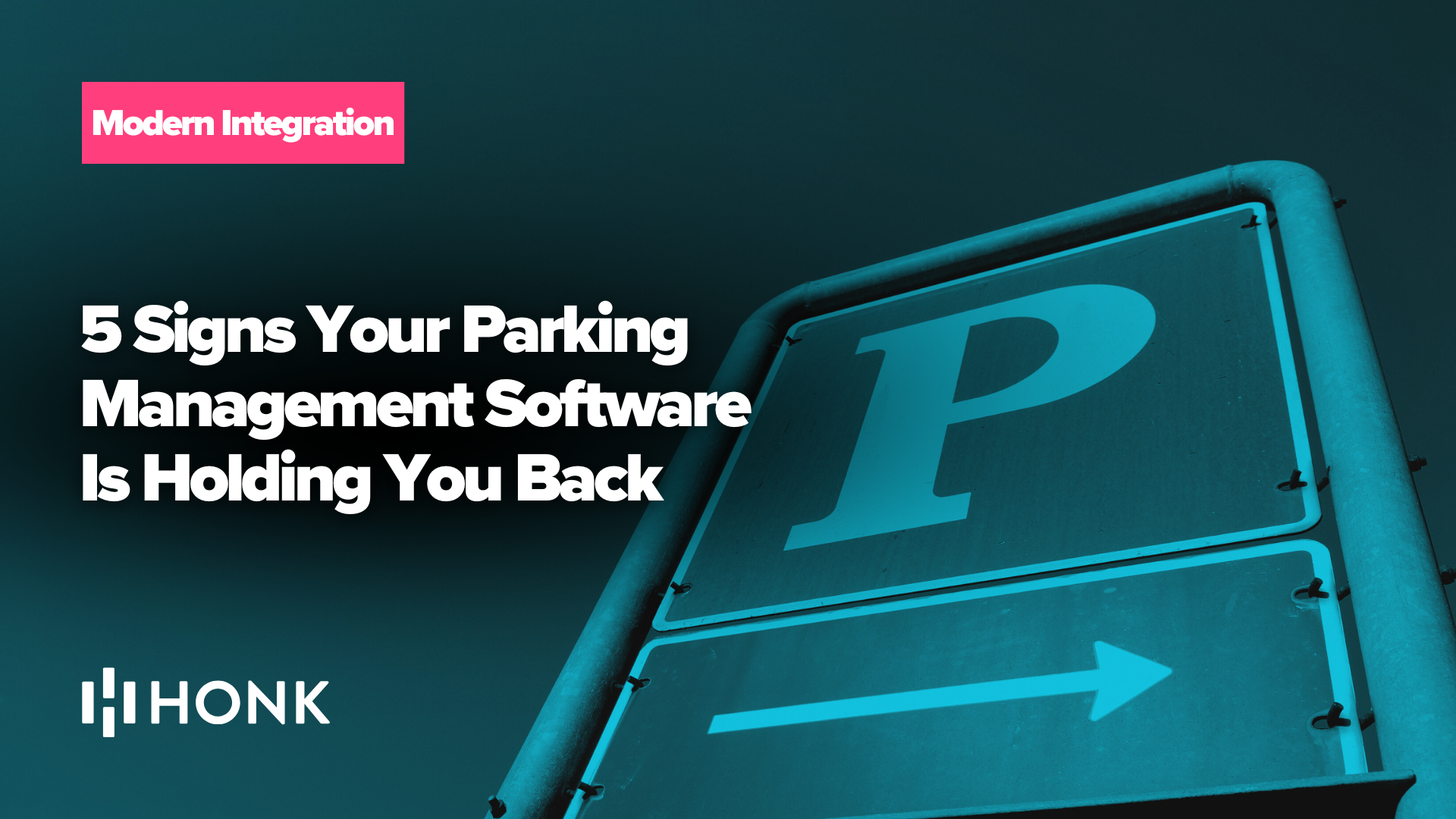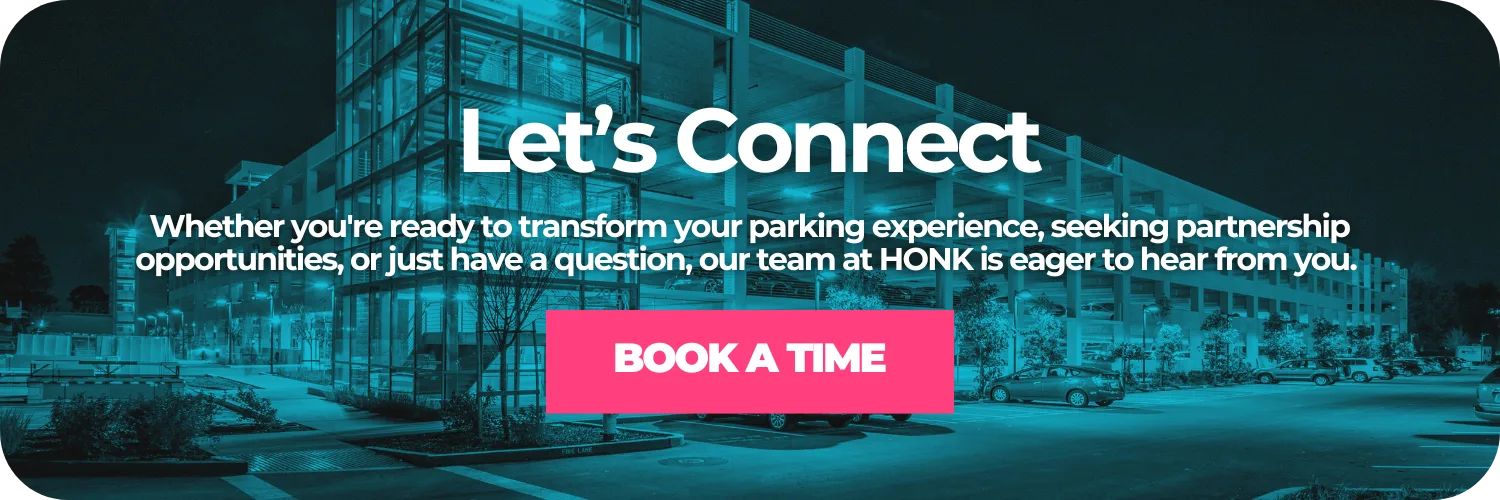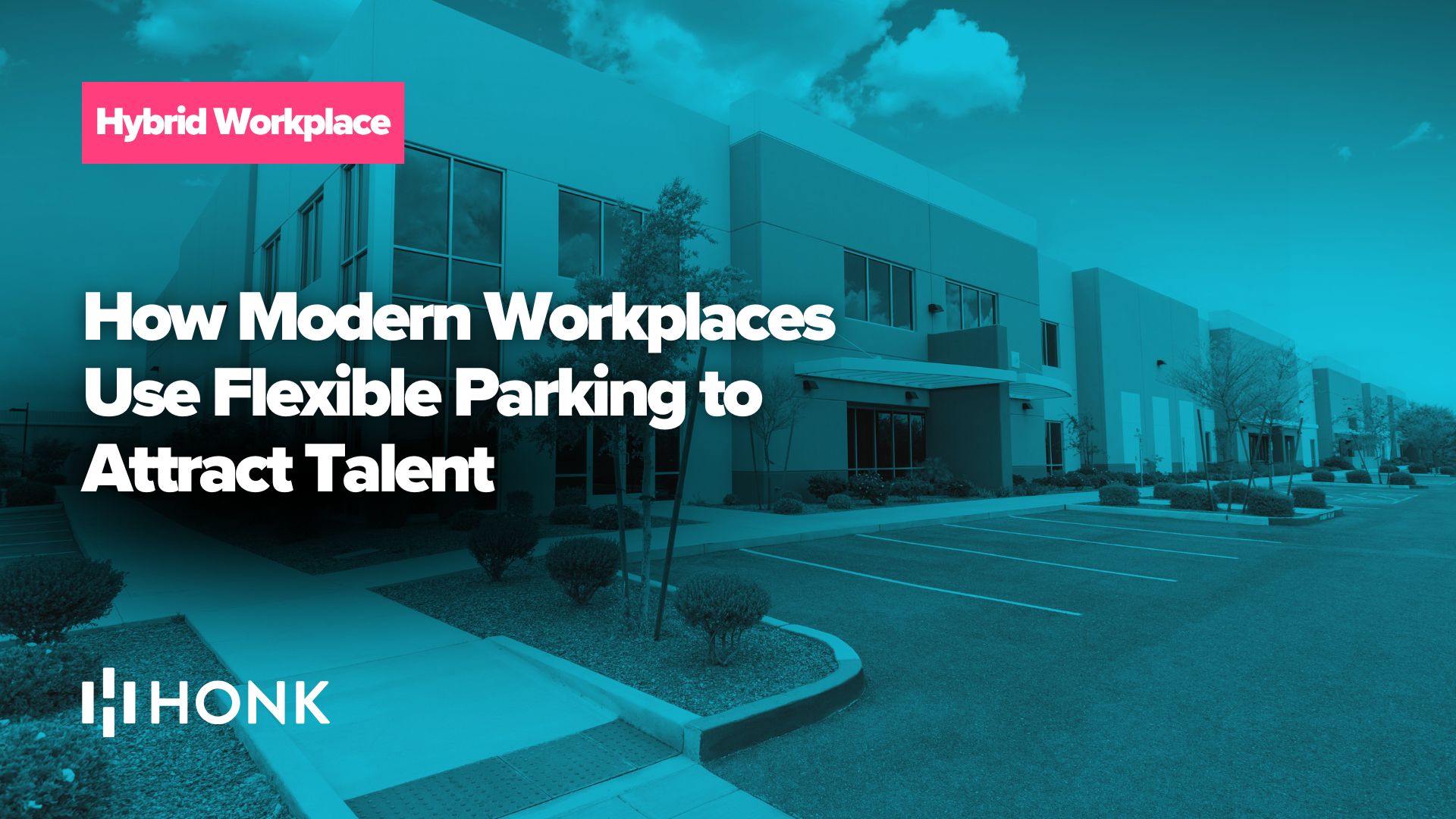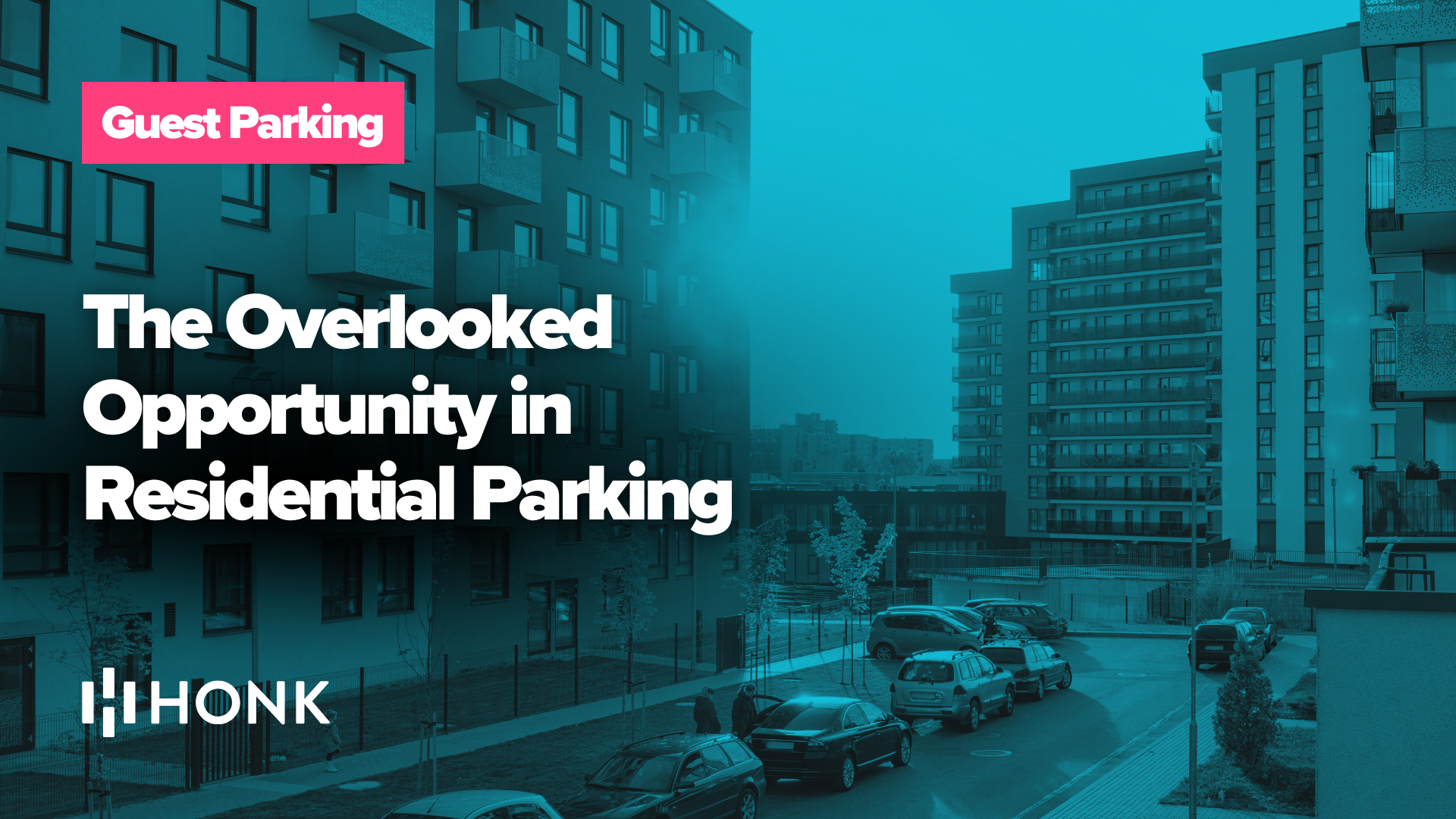In today’s parking industry, your software can make or break your operation. We’ve worked with hundreds of parking operators over the years, and we keep seeing the same pattern: great teams stuck with terrible technology.
Legacy systems and outdated platforms create problems that compound daily. You’re probably dealing with at least one of these issues right now. The question is whether you recognize it as a software problem or just accept it as “the way things are.”
Here are five warning signs that your parking management software is actively holding you back. If even one sounds familiar, it’s worth asking whether your current system is helping you succeed or just getting in the way.
1. You’re Making Decisions Based on Yesterday’s Data
Let’s start with the most frustrating limitation we hear about: reports that show up too late to matter.
Picture this. It’s 2 PM on a Saturday, and your downtown lot is completely full while your garage three blocks away sits half empty. By the time you see this in Monday’s report, the opportunity is gone. This happens constantly with traditional systems that generate reports on a schedule rather than in real-time.
The Real Cost of Delayed Information
When you’re looking at day-old (or week-old) data, you can’t respond to what’s actually happening. One university we work with used to get their occupancy reports every Friday afternoon. They’d spend Monday morning in meetings discussing what happened the previous week. Meanwhile, the same patterns were repeating themselves in real-time, and they had no way to address them.
Parking facilities with real-time data access see revenue increases of 15-20% on average. That’s not from magic. It’s from being able to make decisions when they actually matter.
Here’s what you should be able to see right now, not tomorrow:
- Current occupancy across all your locations
- Transaction volumes and revenue as they happen
- Which payment methods people are using
- Where enforcement is needed most
- Patterns emerging in customer behavior
Without this visibility, you’re driving blind.
Why Dynamic Pricing Is Impossible Without Real-Time Data
As we discussed in our article on building smarter suburbs, operators using real-time data for dynamic pricing see significant gains in both revenue and utilization.
Think about a major sporting event at a nearby venue. With real-time data, you can adjust pricing as spaces fill up, send notifications to regular customers about availability, redirect traffic to less-utilized areas, and extend hours where demand is highest. With yesterday’s data? You just watch it happen and hope for the best next time.
What Modern Reporting Actually Looks Like
Pull up our dashboard on your phone right now and you’ll see everything. Live numbers, updated every few seconds. That’s not a luxury feature anymore. It’s table stakes. We built our platform so operators can check in from anywhere and know exactly what’s happening. Not charts for the sake of charts. Information you can actually use to run your business better.
2. Your Staff Is Buried in Busywork
Here’s a question: how much time does your team spend on tasks a computer should be handling?
Cash handling alone eats up about 9% of collected revenue in operational costs. But that’s just the beginning. We’re talking about daily collection runs to empty meters, hours of manual reconciliation between systems, distributing physical permits and tracking them down when lost, coordinating enforcement with paper lists or outdated databases, and building reports in spreadsheets because your system can’t generate them.
One municipal client told us their team was spending 20+ hours per week just dealing with cash. That’s half a full-time employee doing work that benefits nobody.
Why This Prevents You From Growing
Manual processes create a scaling problem. Want to add another facility? You’ll need more staff to handle the additional workload. Growth becomes expensive and complicated fast.
After switching to our system, one operator reduced their administrative staff needs by 30% while expanding their portfolio by 40%. The automation handled the growth without proportional cost increases.
What Actually Gets Automated
Modern platforms should handle the repetitive stuff automatically:
- Process payments and deposit funds directly
- Generate and send digital permits without staff involvement
- Reconcile everything in real-time across all systems
- Flag unusual patterns or potential problems
- Create whatever reports you need, whenever you need them
When this runs in the background, your team can focus on the work that actually needs human judgment. Like improving customer experience, solving complex operational challenges, and planning strategic growth. You know, the valuable stuff.
As we covered in our post about parking turnover optimization, automation doesn’t just cut costs. It improves accuracy and makes customers happier too.
3. Your Systems Don’t Talk to Each Other
Quick test: when someone pays for parking through your mobile app, does that information instantly reach your enforcement officers in the field?
If the answer is “not exactly” or “it depends,” you’ve got an integration problem. And it’s costing you more than you think.
The Data Silo Problem
Legacy parking systems were built to stand alone. They might have their own payment processing, their own enforcement database, and limited ability to share information with anything else. This creates headaches everywhere:
- You’re entering the same data in multiple places
- Information can’t be cross-referenced in real-time
- Someone has to manually reconcile systems at the end of every day
- You can’t see the complete picture of what’s happening
- New technology is impossible to adopt because nothing connects
Over 40% of operators cite compatibility issues as a major barrier when evaluating new tech. That’s not a minor inconvenience. It’s a fundamental limitation on what you can accomplish.
What This Looks Like in Practice
Here’s a scenario we’ve seen dozens of times. A customer pays through your mobile app. Great, right? Except the enforcement system doesn’t know about it. An officer writes them a ticket. The customer calls, upset and confused. Your staff has to manually look up the payment, verify it, void the citation, and apologize for the confusion.
That’s not an edge case. That’s what happens when systems don’t integrate properly.
Or consider this: your payment data doesn’t sync with accounting automatically. Someone spends hours each day manually entering transactions, reconciling discrepancies, and chasing down errors. Every manual step is an opportunity for mistakes.
How Modern Integration Actually Works
Open APIs and pre-built connectors change everything. Our platform integrates with virtually any system in your parking technology stack. PARCS systems, LPR providers, payment processors, enforcement tools, financial software, and customer communication platforms all connect.
When a customer pays through our app, that information flows everywhere it needs to go instantly. Enforcement sees it. Your financial records update. Customer communications trigger automatically. Your dashboard reflects it. All without anyone touching a keyboard. This isn’t about convenience. It’s about creating an operation that actually works the way it should.
We explored this more in our article on smart parking technology and fraud reduction. Connected systems don’t just improve efficiency. They dramatically reduce revenue leakage and security issues.
4. Your Payment Options Are Stuck in 2015
Be honest: how many of your customers still want to pay with coins?
Yet plenty of parking operations still treat mobile payments like a nice-to-have extra feature instead of the baseline expectation it’s become.
What Customers Actually Expect Now
People pay for everything else with their phones. Coffee, groceries, rideshares, you name it. Parking should be just as easy. About 80% of drivers now prefer digital payment options. When your system can’t deliver that, they get frustrated. During COVID, 46% of consumers prioritized contactless payments for safety. Today, 74% still prefer them because they’re faster and easier. This shift isn’t temporary. It’s permanent.
The Revenue Impact
Every bit of friction in your payment process costs you money. People fumbling for coins, standing in line at kiosks, or struggling with a clunky app. Each moment of confusion is a moment someone might just skip paying altogether. Operators who modernize payment systems see 15-20% increases in daily transactions. Not because more people are parking. Because more people are actually paying when it’s easy.
Think about your different customer segments too. Business travelers want corporate billing. Regular commuters prefer recurring payments. Visitors want one-time transactions without downloading apps or creating accounts. If your system can’t handle all of these, you’re leaving money on the table.
Payment Flexibility That Works
Modern systems need to support everything:
- Mobile apps with saved payment methods
- QR code scan-to-pay (no app required)
- NFC tap-to-pay with phones or cards
- Traditional credit/debit card processing
- Digital wallets like Apple Pay and Google Pay
- Account-based billing for permits and monthly parking
Our platform handles all of this and more. Customers pay however they want. We discussed this in detail in our post about revolutionizing parking payments.
Speed matters too. With our QR code option, people scan a sign and complete payment in under 15 seconds. No app download, no account creation. Just scan and pay. For regular users, stored credentials mean one-tap checkout. These experiences drive compliance and set you apart from competitors still using outdated methods.
5. Your System Crashes When You Need It Most
Nothing’s worse than technology that fails during your busiest times.
When Demand Spikes, Systems Fail
Parking demand varies wildly. A university lot might handle 500 transactions on a typical Tuesday and 5,000 during homecoming weekend. Hospital parking can double overnight when a new department opens. Retail lots see predictable holiday surges. Municipal parking gets slammed during special events.
Legacy on-premise systems were typically sized for average load, not peak capacity. When demand spikes, you see the system slow to a crawl, complete crashes that halt operations, failed transactions creating payment nightmares, and overwhelmed customer service from confused, frustrated parkers. One event parking operator we worked with was losing $50,000 annually just from system failures during peak events. Their legacy system couldn’t handle the load, period.
The Cloud Solution
Cloud-based systems solve this completely. Instead of fixed hardware with hard limits, cloud platforms scale automatically based on demand. Transaction volume spikes? The system allocates more resources instantly. Demand returns to normal? It scales back down.
You never pay for capacity you’re not using. You never lack capacity when you need it. Your system performs exactly the same whether you’re processing 50 transactions per hour or 5,000. Customers get the same fast, reliable experience regardless of how busy things are. Your staff doesn’t need to monitor systems or intervene during events. It just works.
Growing Without the Growing Pains
Beyond handling temporary spikes, cloud systems make long-term growth dramatically simpler. Adding new facilities doesn’t require buying servers, configuring networks, or worrying about capacity. You configure new locations in the software and post signs. That’s it. One of our clients added 15 locations over 18 months with zero increase in IT infrastructure costs. With their previous system, each expansion required significant capital investment and weeks of technical work. With our platform, they configured each new site in hours and processed transactions the same day.
The ability to deploy and scale quickly is essential for maximizing existing assets and pursuing new opportunities. We covered this in our discussion of monetizing underutilized parking assets.
Why This Actually Matters
If any of these five signs hit close to home, you’re not alone. Thousands of parking operators are dealing with outdated software that limits what they can accomplish. The temptation is to stick with what’s familiar. Change feels risky. The upfront investment seems daunting. Migration sounds complicated. But staying put has real costs too.
What You’re Losing Every Day
Consider what outdated software is actually costing you:
- Revenue lost to inefficient operations and low payment compliance
- Excessive labor costs from manual processes
- Customer frustration that drives people to competitors
- Inability to implement revenue-optimizing strategies
- Growth opportunities you can’t pursue because the system won’t scale
- Technical debt that compounds as systems age
These costs add up. Fast. And they get worse over time, not better.
An outdated system doesn’t just limit current performance. It actively prevents you from adapting to changes in technology, customer expectations, and market conditions.
What Modern Software Actually Enables
Upgrading to a cloud-based platform unlocks capabilities that legacy systems simply can’t provide:
- Real-time visibility into your entire operation
- Automated workflows that eliminate manual work and cut costs
- Integration with your complete parking technology ecosystem
- Flexible payment options that meet customers where they are
- Elastic scalability that handles any volume automatically
Beyond operational improvements, modern software enables entirely new approaches. Dynamic pricing based on real-time demand. Digital permit programs with flexible terms. Data-driven space optimization. Automated customer communication. Advanced analytics that inform strategic decisions.
How We Built HONK Different
We’ve designed our platform specifically to solve these problems. We work with operators of all sizes, from single-location municipal operations to large multi-facility portfolios. The goal is always the same: transform parking from a cost center into an asset. Our cloud-based system delivers real-time reporting accessible from any device, complete automation of payments and permits, open APIs and integrations with leading parking technologies, comprehensive payment flexibility including mobile and contactless options, and infinite scalability that grows with you without infrastructure costs.
Technology is only part of it though. We’ve also built our support and partnership model around your success. From implementation through ongoing optimization, we work alongside you to maximize value.
Ready to Move Forward?
If your current parking management software is holding you back through any of these five issues, it’s worth exploring what modern alternatives can do. The parking industry is evolving fast. Operators embracing cloud-based platforms are pulling ahead of competitors still struggling with legacy systems. The gap is widening. The question isn’t whether you can afford to upgrade. It’s whether you can afford not to. Every day with inadequate software is another day of lost revenue, operational inefficiency, and customer frustration. Modern parking management platforms like HONK are designed for quick implementation and rapid ROI. Many of our clients see positive returns within the first few months as operational efficiencies and increased revenue offset the investment.
We’d love to show you how HONK’s platform can transform your operation. Whether you’re managing one location or a complex portfolio, we’ve got solutions for your specific challenges. The future of parking management is already here. Don’t let outdated software hold you back





